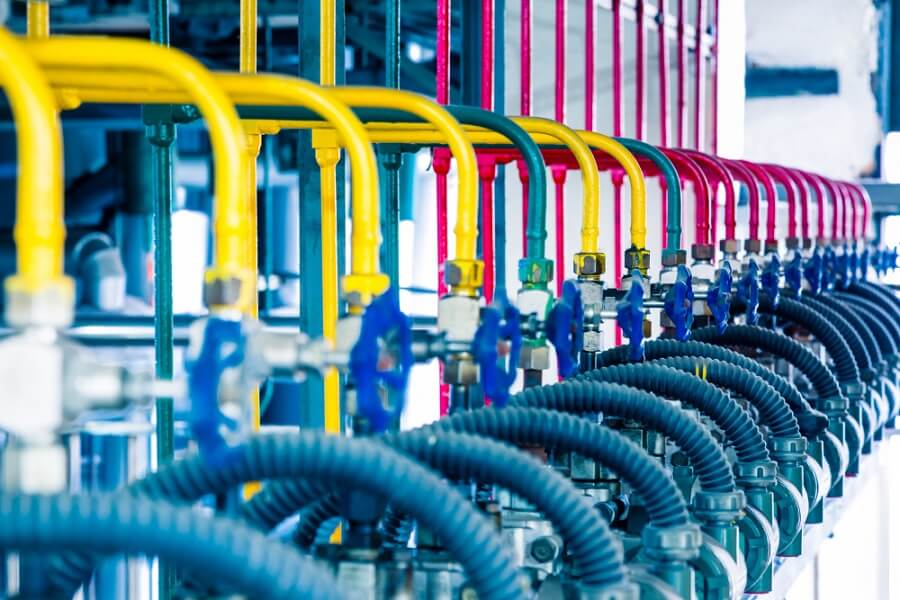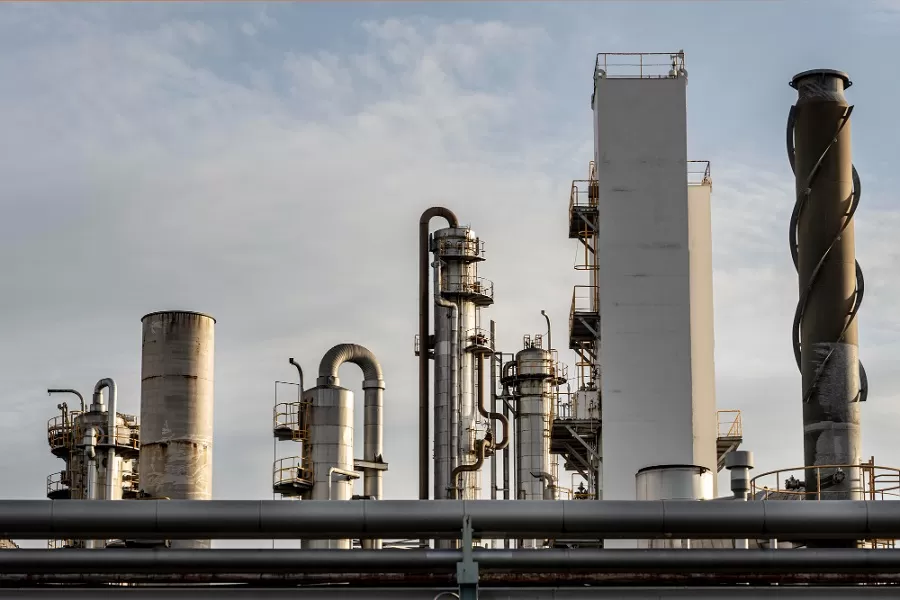Fire sprinkler systems are the unsung heroes of building safety. They help suppress fires and protect lives and property when needed the most. However, designing and installing fire sprinkler systems is complex and demands coordination and precise planning. Traditional sprinkler system design processes work no longer as they are plagued with challenges, including manual errors, communication gaps among stakeholders, and time-consuming clash detection. This is where BIM, with its robust capabilities, steps in to bring about a revolution in fire sprinkler system design.
What is BIM?
Building Information Modeling (BIM) is a digital 3D representation of a building’s physical and functional characteristics. It incorporates the power of 3D modeling, database management, and project scheduling to create a centralized platform for enhanced knowledge sharing and collaborative decision-making.
By using advanced software like Autodesk Revit, AutoCAD, Navisworks, and more, BIM helps in electronically creating, extracting, updating, modifying, storing, and tracking comprehensive information related to building design and construction. The information includes the specifications, cost, applicable codes and standards operation, product installation manuals, parts inventory, maintenance schedules, warranties, and virtually any information that’s required for the efficient construction and management of a facility.
Over the years, BIM has empowered thousands of stakeholders to elevate efficiency and productivity in the world of construction and facility management. Its seamless integration of data leads to smarter decisions, reduced costs, and more sustainable projects.
Role of BIM in Fire Sprinkler System Planning
Just like other mechanical, electrical, and plumbing components of the building, fire sprinkler systems too require meticulous spatial planning to ensure that every component, from fire alarms to sprinkler systems, is strategically placed for optimal effectiveness. By creating highly detailed 3D models of fire sprinkler systems, BIM allows designers to visualize and fine-tune these placements with accuracy and precision. It minimizes the risk of misplacement or errors that could compromise the safety of the building or its residents.
Other advantages of BIM in fire protection sprinkler systems include:
Enhanced Efficiency
Efficiency is the heartbeat of any construction project. With BIM, engineers can optimize pipe routing and sizing and draft cost-effective solutions. It helps in reducing project timelines, minimizing disruptions during construction, and ultimately helps in saving costs. The National Institute of Standards and Technology (NIST) reports that BIM can result in up to 30% savings in construction costs.
Collaborative Excellence
Fire protection sprinkler system drawings require seamless collaboration among architects, engineers, contractors, and fire protection specialists. Building Information Modeling fosters this collaboration by providing a centralized platform for all stakeholders to connect and collaborate. Fire system designers can integrate their plans with those of architects, structural engineers, and others, ensuring that all systems work harmoniously and efficiently. By providing real-time access to information and changes, it ensures that everyone is on the same page, leading to informed decision-making and smoother project execution.
Real-Time Simulations
One of the most significant advantages of BIM in fire system design is its ability to conduct real-time simulations. With the help of advanced software and technologies like Autodesk Revit and AutoCAD, designers can simulate various fire scenarios to assess the performance of fire safety systems under different conditions. This allows for the identification of potential flaws or weaknesses much before construction even begins, thus helping to save both time and resources.
Superior Clash Detection
One of the most profound impacts of BIM in fire sprinkler system planning is its role in clash detection. Traditionally, identifying clashes between different building systems was a labor-intensive and error-prone process. BIM’s automated clash detection tools continuously scan the 3D model for spatial conflicts and inconsistencies, making it easier to detect potential clashes early in the design phase.
Streamlined Documentation
BIM simplifies the generation of construction documents for fire sprinkler systems. With it, designers can automatically extract accurate plans, sections, and details from the BIM model. This reduces the time and effort required for documentation. This not only accelerates the design process but also minimizes the chances of errors in the final drawings.
Hassle-Free Maintenance and Facility Management
The benefits of BIM extend beyond the construction phase. Building owners and facility managers can leverage the BIM model for ongoing maintenance and facility management. They have access to comprehensive information about the fire sprinkler system, including component specifications, maintenance schedules, and performance data. This ensures that the system continues to operate effectively throughout its lifecycle.
Challenges and Considerations with BIM Adoption
While the advantages of BIM in firefighting drawings are undeniable, there are some challenges and considerations too. Here are some key points to keep in mind:
- Learning Curve: BIM leverages advanced tools and software that require training and expertise. Designers, engineers, and other stakeholders may need to invest time in learning how to use BIM effectively.
- Initial Costs: Implementing BIM software can come with upfront costs. Software licenses, hardware upgrades, and training expenses quickly add up. Small firms or projects with limited budgets may find these costs challenging to manage.
- Data Management: Sometimes managing and organizing vast amounts of data generated by BIM can be challenging. Thus, it is important to establish effective data management systems and protocols so that the right information can reach the right people at the right time.
- Integration with Existing Workflows: Integrating BIM into existing design and construction workflows may require changes to established processes.
- Maintenance and Updates: BIM models should be continuously updated throughout a building’s lifecycle. Ensuring that the model remains accurate and reflects any modifications or renovations can be a resource-intensive process.
Overcoming the Challenges Through Fire Protection System Design Outsourcing
The challenges of implementing Building Information Modeling (BIM) in fire protection system design can indeed be effectively addressed by forming a strategic partnership with a third-party service provider. Such a partnership offers several advantages, including:
- Access to specialized BIM expertise
- Reduced operational costs
- Optimal resource utilization
- Superior data management
- Streamlined project workflows
- Seamless collaboration and coordination
- Quick and hassle-free project completion
- Complete adherence to the applicable compliance and standards
- Time zone advantage
However, for best results, selecting a reputable and experienced fire protection systems design outsourcing provider is a must. With the right strategic partner, the integration of BIM into fire sprinkler system design becomes smoother and more efficient and ensures enhanced project outcomes and overall success.
Hire fire sprinkler system design experts from Enginerio and unlock a world of BIM-driven innovation. Our seasoned professionals bring a wealth of experience and a commitment to excellence to every project. We can help you transform your fire protection systems with precision, compliance, and efficiency. Partner with us today and experience the future of fire sprinkler system design.





